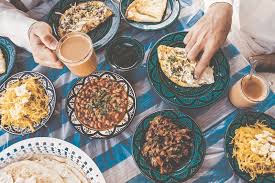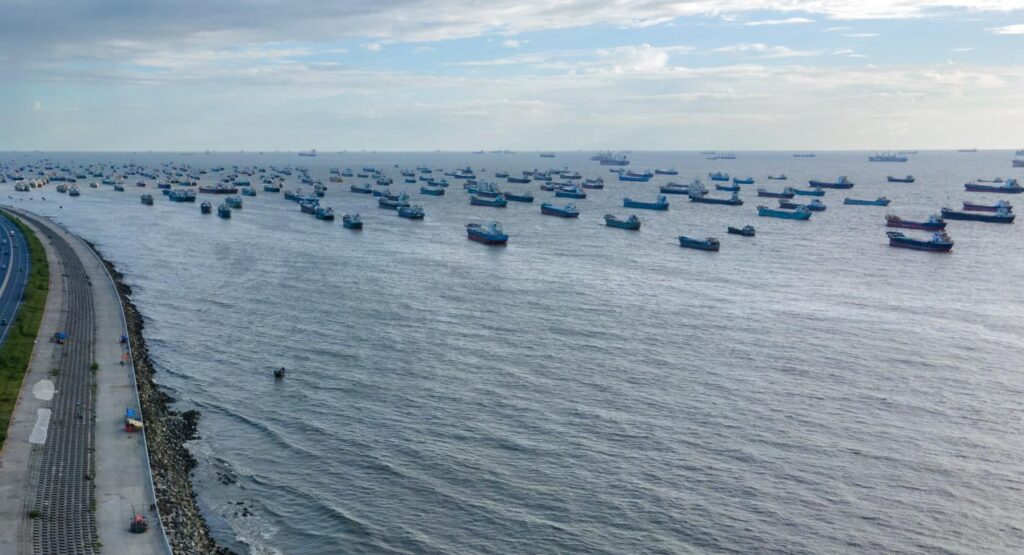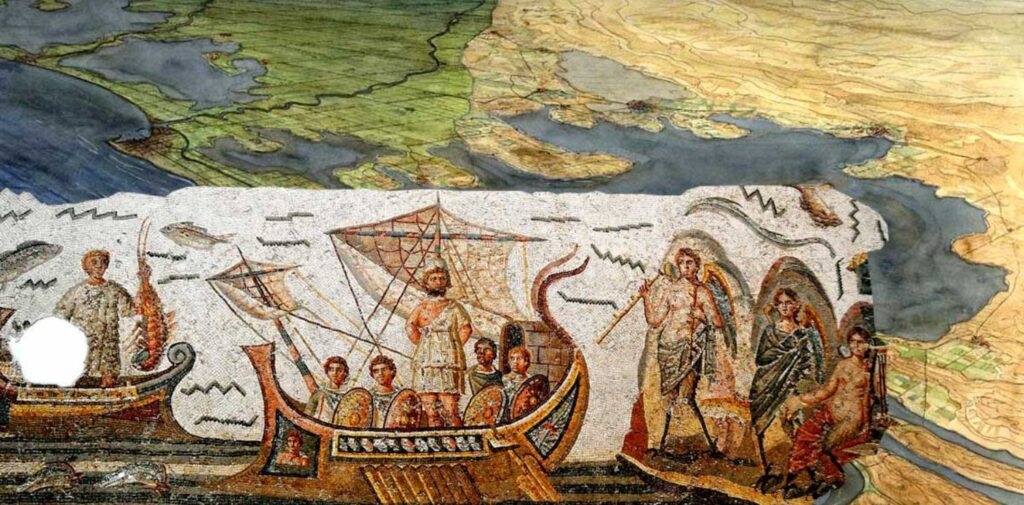A Journey of Food and Connection
Flavors Across Oceans: Indian Ocean Trade Shaped Bahraini Cuisine,Bahrain’s story is not just about pearls, trade, and history it is also about the taste of spices, the aroma of grilled fish, and the sweetness of dates. The island, lying gracefully in the heart of the Gulf, has long been a meeting point between traders, cultures, and ideas. One of the most profound influences on Bahrain’s food culture came from the Indian Ocean trade routes. These routes carried not only goods and wealth but also recipes, ingredients, and culinary traditions that continue to define Bahrain’s unique food identity today.
When we imagine trade in the Indian Ocean, we think of ships heavy with spices, rice, dried fruits, and textiles. But what often goes unnoticed is how these items shaped the lives of people on the land where they were received. Bahrain, with its strategic location, became a cultural melting pot where Indian, Persian, East African, and Arabian food traditions blended. This created a cuisine that is distinct, flavorful, and deeply rooted in history.
The Ocean as a Culinary Highway
The Indian Ocean was not just a sea it was a highway of flavors. For centuries, Bahraini traders and sailors traveled across its waters, bringing back more than wealth. They returned with exotic spices like turmeric, cinnamon, cardamom, and cloves, which soon became essentials in Bahraini kitchens. Rice, another staple brought through trade, transformed local meals and became the heart of traditional dishes like machboos, a fragrant rice dish often served with fish, lamb, or chicken.
Through this trade, new cooking techniques also made their way into Bahrain. The idea of layering rice with meat and spices, much like biryani, influenced the way Bahrainis prepared celebratory meals. The practice of blending spices to create masalas found a new home in Bahraini households, where it was adapted to suit local tastes.
Spices That Tell Stories
Every pinch of spice in Bahraini food carries a story of exchange and adaptation. Cardamom, for instance, traveled from India and became an essential ingredient not only in savory meals but also in Bahraini coffee, giving it its signature aroma. Saffron, with its golden hue, brought from Persia and India, turned simple rice dishes into festive meals. Black pepper from the Malabar Coast became the backbone of marinades and soups.
These spices did more than just add taste they connected Bahrain to a larger world. A dish prepared in a Bahraini home carried hints of faraway lands, reminding people of the shared heritage built over centuries of trade. Families passed down recipes that were a mix of local traditions and international influences, weaving history into everyday meals.

The Role of Rice in Bahraini Cuisine
Before the influence of Indian Ocean trade, rice was not a common food in Bahrain. Dates, fish, and locally grown produce dominated the diet. But the arrival of rice through Indian and Persian traders transformed the way people ate. Rice became the foundation of festive dishes, allowing for creativity in mixing flavors and textures.
Machboos, often called the national dish of Bahrain, is the perfect example of this transformation. It is a dish that could not have existed without rice, and its preparation showcases a blend of local and foreign influences. Cooked with aromatic spices, tender meat or fish, and sometimes garnished with fried onions, nuts, or raisins, machboos is a celebration of the island’s food culture. It is also a symbol of how trade brought people together through shared meals.
Sweet Traditions with Foreign Roots
The sweet side of Bahraini cuisine also carries the imprint of Indian Ocean trade. Ingredients like sugar, rose water, and ghee came from afar and transformed local desserts. Halwa, a sticky, fragrant dessert often flavored with saffron and cardamom, is a favorite treat that owes its richness to imported ingredients. Rose water, introduced through Persian and Indian trade, found its way into Bahraini sweets and drinks, making them refreshing and unique.
These desserts were more than just food they were symbols of hospitality. Sharing sweets became a way to welcome guests, celebrate festivals, and mark important milestones. The flavors reflected a cultural openness, embracing the world beyond Bahrain’s shores.
Fish and the Ocean’s Bounty
While trade introduced new flavors, Bahrain’s traditional reliance on the sea remained strong. Fish continued to be a staple of the Bahraini diet, but even here, the influence of Indian Ocean trade was felt. Cooking methods like marination with imported spices gave Bahraini fish dishes a new depth. Grilled, fried, or cooked in rich sauces, fish became a canvas for experimentation.
The combination of local seafood and traded spices created meals that were both familiar and adventurous. A grilled fish marinated with turmeric and garlic told a story of the ocean’s bounty and the faraway lands connected by it. For Bahrainis, the sea was both a provider of food and a bridge to other cultures.
The Social Impact of Shared Meals
Food in Bahrain was not only about sustenance it was about community. The trade-driven cuisine created new traditions of gathering, sharing, and celebrating. Meals became an occasion to bring families and neighbors together. Whether it was a large plate of rice shared at a family table or a sweet offered to a guest, the act of eating carried cultural significance.
Indian Ocean trade ensured that Bahraini food was never static. Each wave of exchange brought new flavors, making Bahraini cuisine a living, evolving tradition. In this way, food became a mirror of society, reflecting openness, hospitality, and adaptability.

Cultural Fusion in Everyday Life
What makes Bahraini cuisine so unique today is this fusion of influences. A simple dish may include rice from India, spices from Persia, techniques inspired by East Africa, and fish from local waters. This combination represents centuries of cultural blending, where no single influence dominates but all coexist harmoniously.
Even modern Bahraini cuisine continues this tradition. Contemporary chefs experiment with global flavors while staying true to their roots. A machboos might be reimagined with new ingredients, but the spirit of blending cultures remains unchanged. The foundation laid by centuries of Indian Ocean trade still shapes Bahrain’s food identity today.
A Heritage of Resilience and Openness
The story of Bahraini food is also a story of resilience. Despite being a small island with limited agricultural resources, Bahrain turned its geographical position into an advantage. By embracing trade, it not only survived but thrived, creating a cuisine that is both resourceful and rich.
This openness to outside influences did not erase local traditions it strengthened them. Bahraini cuisine became a dialogue between the local and the global, where each new ingredient was adapted rather than imposed. The result is a heritage that is both proudly Bahraini and deeply connected to the world.
The Lasting Influence on Identity
Today, when Bahrainis gather around a table, they are continuing a tradition that goes back centuries. The rice, the spices, the sweets, and the seafood all carry echoes of Indian Ocean trade. Every dish is a reminder that Bahrain’s identity is shaped not only by its land and people but also by its connection to the wider world.
This influence goes beyond taste it is a part of cultural identity. To eat Bahraini food is to taste history, to feel the warmth of hospitality, and to experience the blending of worlds. The Indian Ocean may have carried goods, but its greatest gift was the ability to connect people through the universal language of food.
Conclusion: A Flavorful Legacy
The influence of Indian Ocean trade on Bahraini food is a legacy that continues to thrive. It brought spices, rice, sweets, and cooking techniques that reshaped the island’s culinary traditions. It turned Bahrain into a cultural crossroads where food was not only about nourishment but also about identity, community, and heritage.
Bahraini cuisine today is a living testimony to this history. It shows how trade, far from being just an economic activity, was also a cultural exchange that enriched daily life. Every bite of machboos, every sip of saffron-infused coffee, every taste of rosewater halwa carries within it centuries of journeys across the ocean.
This is the magic of Bahraini food it is not only about what is on the plate but also about the story behind it. And that story will always be tied to the Indian Ocean, the great connector of people, cultures, and flavors.
Do follow Gulf Magazine on Instagram.
Also Read – Flavors of Bahrain: Traditional Soups and Stews Journey



